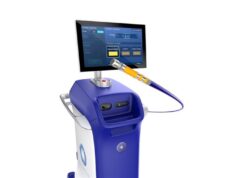
The natural history and clinical features of Brugada syndrome in adults have been well characterised. However, data on the syndrome in children and young adolescents are scarce. One area of controversy is whether asymptomatic children suspected to be carriers of Brugada syndrome (eg, those with a family history or unexplained sudden cardiac death in a first-degree relative) should undergo pharmacological provocation screening. Juan Pablo Kaski summarises the arguments, for and against, screening for Brugada syndrome in children.
The characteristic (type I) ECG pattern of Brugada syndrome, which consists of J-point elevation in the anterior precordial leads, may be present at rest, but often only becomes apparent following provocation with sodium-channel blocking drugs, such as ajmaline and flecainide.
Pharmacological challenge tests, therefore, can be used to unmask the type I ECG pattern and diagnose the condition in individuals thought to be at risk of inheriting Brugada syndrome.
Most children with Brugada syndrome have a normal ECG at baseline, and therefore diagnosis of the condition requires pharmacological provocation. But while there are well established guidelines and protocols for ajmaline (and flecainide or procainamide) testing in adults, data in paediatric populations are very limited. However, recently published reports1, and our own experience in our institution, suggest that ajmaline provocation is feasible and very safe in children, when performed in the appropriate setting by experienced operators.
If we can screen for Brugada syndrome in children, should we?
Few would argue against screening for Brugada syndrome in a symptomatic child who have a first-degree relative with the syndrome. However, the question of whether asymptomatic children should be offered screening for Brugada syndrome is more controversial.
The finding of a type I Brugada syndrome ECG on ajmaline provocation testing may allow risk stratification and appropriate management to be instituted in some cases. Furthermore, as the syndrome is an autosomal dominant trait, confirmation of the diagnosis in a child of an individual known to have Brugada syndrome can remove the uncertainty of a situation in which there is a 50% chance of inheriting the condition. Conversely, the finding of a negative pharmacological challenge can provide peace of mind to the family.
However, there are a number of arguments against offering pharmacological screening for Brugada syndrome to children. First, although cases of sudden cardiac death due to Brugada syndrome in children are well recognised, the risk of ventricular arrhythmia in childhood is very low. Therefore, a positive ajmaline test may not change the clinical management.
However, the knowledge that a child carries a potentially life -threatening condition may result in significant psychological consequences for the child and the family. Furthermore, even if the pharmacological challenge is negative, a degree of uncertainty may still remain, as there may be an age-related penetrance to the test, such that a negative test in childhood may theoretically become positive in late adolescence, and the test may therefore need to be repeated.
Conclusion
Further research is required to determine the prognostic value of ajmaline testing in childhood and to allow paediatric-specific guidelines for pharmacological testing for Brugada syndrome to be developed. Until then, each case and family has to be evaluated on an individual basis with careful consideration of the potential benefits and disadvantages of screening for Brugada syndrome in a child.
Juan Pablo Kaski is a consultant paediatric cardiologist at the Inherited Cardiovascular Diseases Unit, Great Ormond Street Hospital, London, UK.
References
1. Paparella , et al. Pacing Clin Electrophysiol 2011,34:736–4









